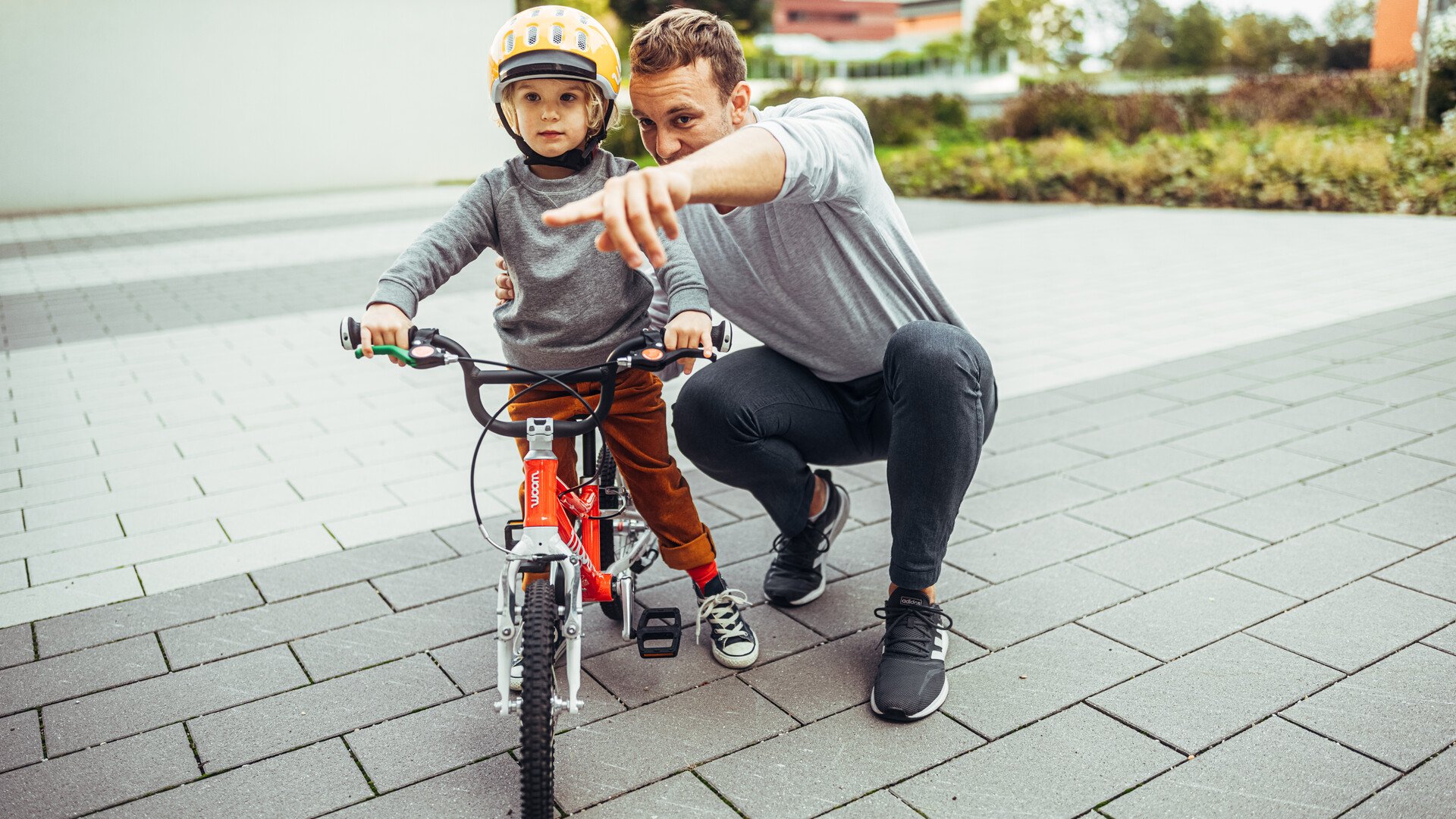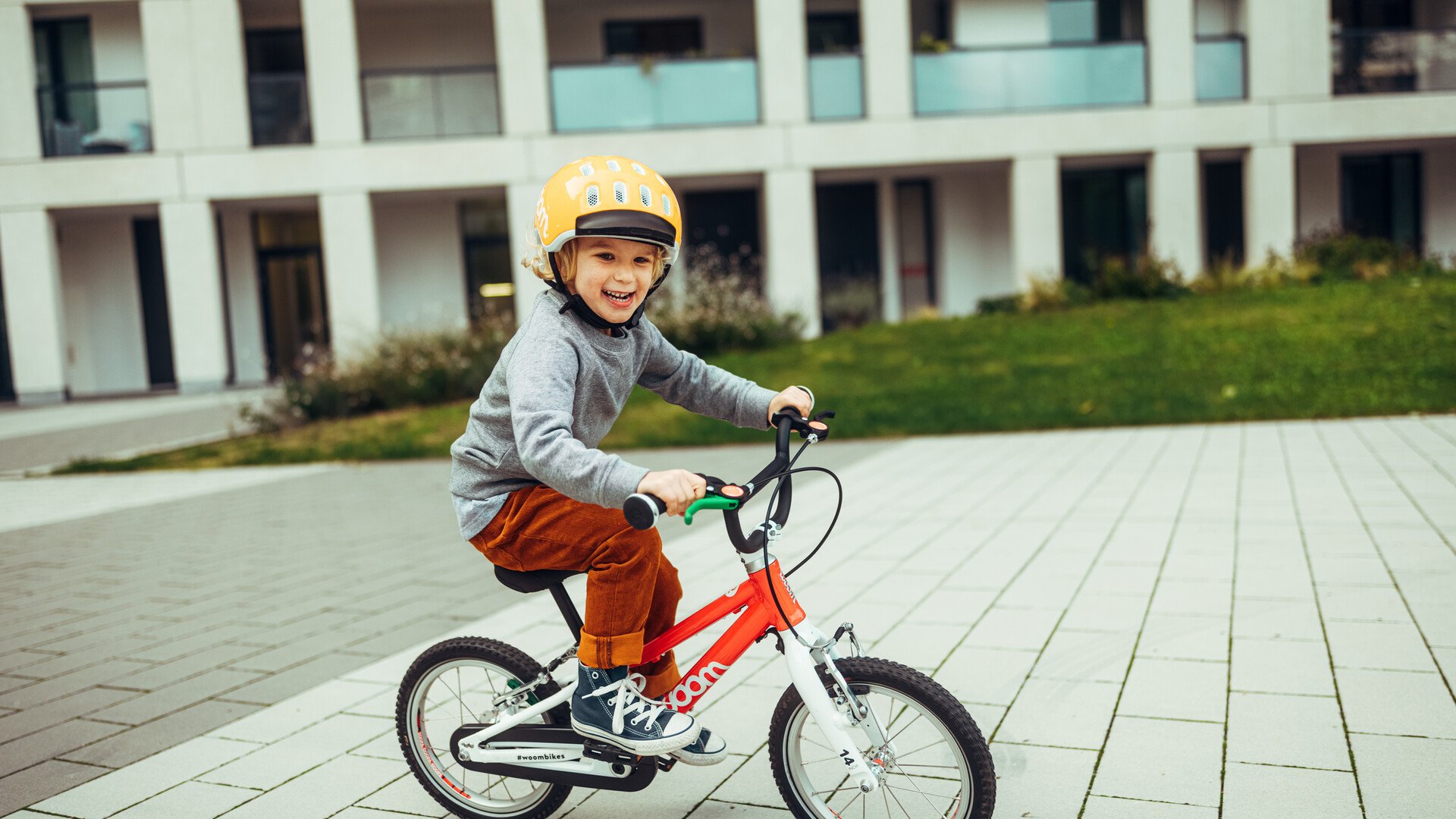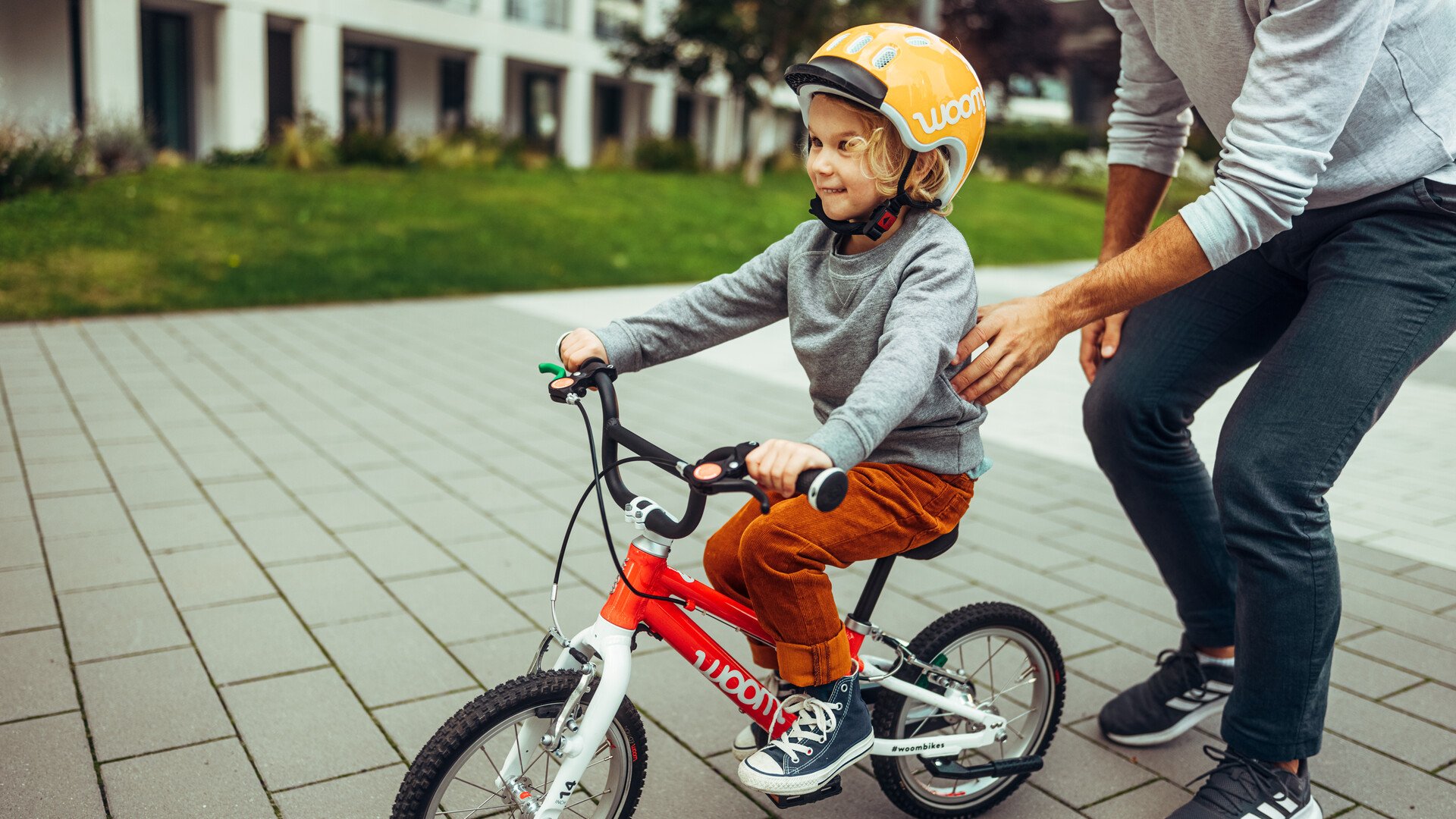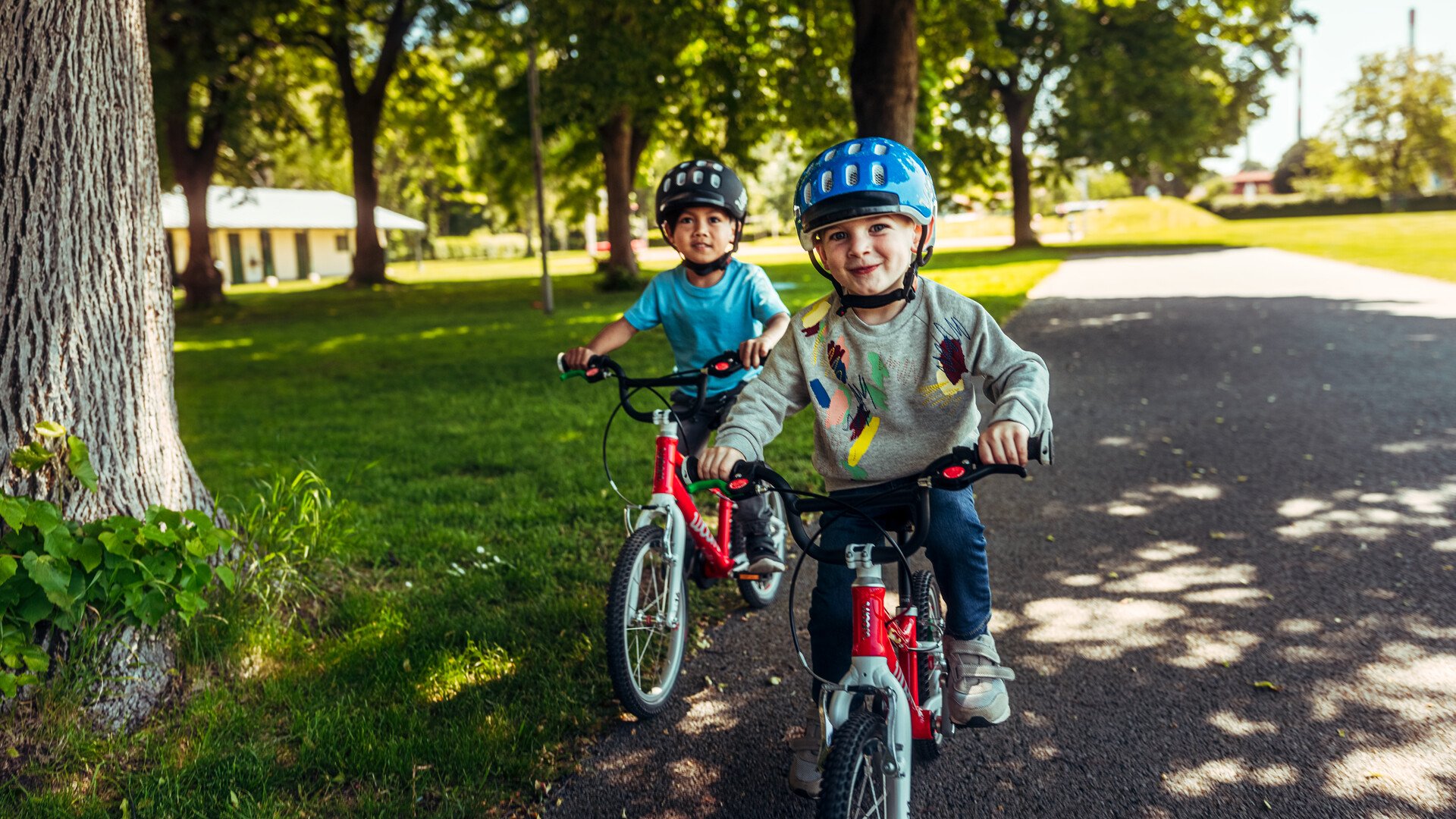Bike-handling tips for children (and their parents)

“It’s as easy as riding a bike” is a deceptive saying—it may be easy to pedal from point A to point B in a straight line, but the real world is full of curves, curbs, and other surprises down the road. Get your child ready for every situation and challenge by training their handling skills, and while you’re at it, put your own skills to the test!
Safety while turning
As beginning riders master pedaling for the first time, the next step is to teach them to maintain their balance and control while turning, or “cornering.” Even experienced cyclists benefit from practicing tight corners, learning when to begin braking and how much speed they can carry through the turn. It’s also important to learn how the bike will handle on different surfaces and in different weather conditions.
TIP: Build a slalom course with cones or other objects—first on asphalt, then on other surfaces like grass or gravel.
Braking skills
Proper braking is an important skill at all times, but especially in emergencies, so practicing braking (and even sliding!) is a good idea for kids and adults alike. Becoming familiar with how the front and rear brakes operate on different surfaces will make anyone a more skilled and more confident rider. Make sure that children initially apply very light pressure on the brakes and only slowly approach exercises with full braking.
TIP: Experiment with target braking exercises: use two cones to mark the earliest braking point, and a chalk line 10 to 15 feet beyond to mark the limit at which the bike should be completely stopped.
Mastering balance
Balance and dexterity are essential components of riding, and a rider can hone these skills further by practicing specific techniques useful for everyday riding. For example, riders should learn to turn their head and look behind one shoulder while maintaining forward momentum—this backward glance helps one stay aware of what’s behind and also safely cross lanes or turn around. Learning to ride with one hand or no hands, or learning to balance while slowing to a complete stop and then starting again without first putting a foot on the ground, are also very useful skills. As a rider’s skills progress, keep adding new challenges—try riding up and down curbs, across railroad tracks, and up or down steep gradients.
TIP: Practice new skills away from traffic in locations like parks, empty parking lots, and open fields.
Bike maintenance and traffic
The rules of the road are essential for every cyclist to learn, and even the youngest cyclists can be taught the basics of road safety and bike maintenance. For instance, checking tire pressure and the brakes before leaving for a ride should be part of every outing. Older children can learn to change flat tires and maintain their chain themselves.
TIP: Make traffic safety and bike maintenance part of everyday conversation and part of every ride. Often this gives parents a good opportunity to brush up on their knowledge as well.
First tricks
Tricks aren’t just for fun and looking cool: they can also improve a rider’s handling skills. When a rider has mastered basic riding skills and is ready to take it to the next level, you can start incorporating tricks like wheelies (lifting up the front wheel and riding only on the rear wheel), riding over small ramps, and “bunny hopping” (lifting both the front and rear wheels off the ground simultaneously, often to avoid obstacles). For these exercises, it’s recommended to practice in a large, car-free area.
TIP: Bike parks and pump tracks often offer steep turns and other obstacles for beginners. Also consider bike clubs in your area; many offer programs or courses that are designed for children, and there your rider can learn both from professionals and peers.
Bikes are fun—families who spend time together learning new skills or refreshing old skills and knowledge are guaranteed to have a memorable and enjoyable experience. Fair warning: children will be thrilled when they can do something better or learn faster than their parents, and they won’t be afraid to gloat! You’ll find yourself pushed to achieve (or to keep up). But don’t let that stop you from getting on the bike to practice together, learn, and have fun!


